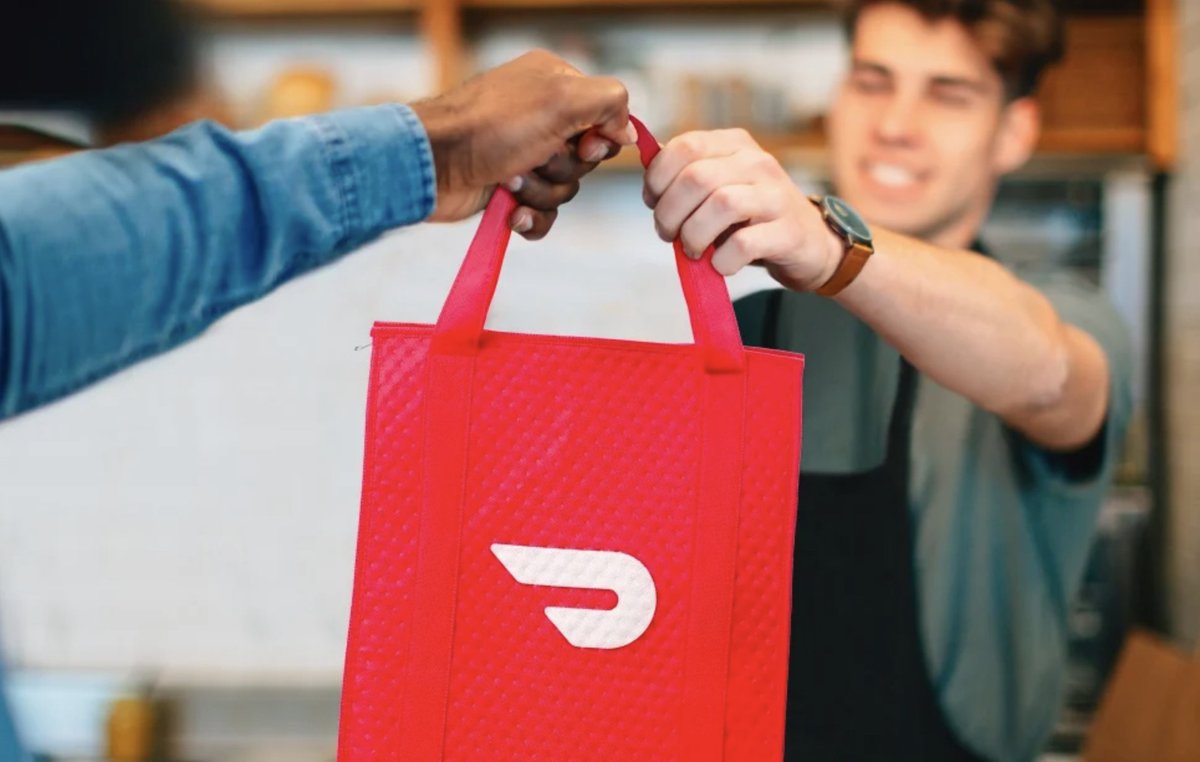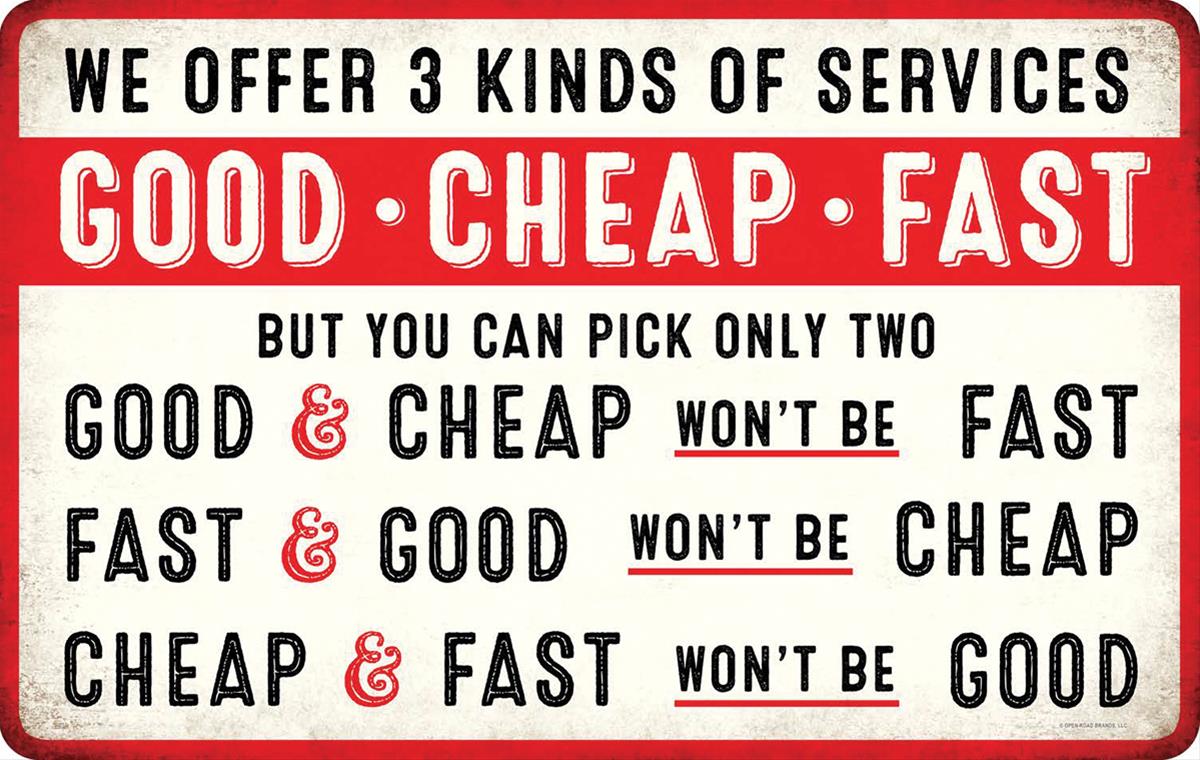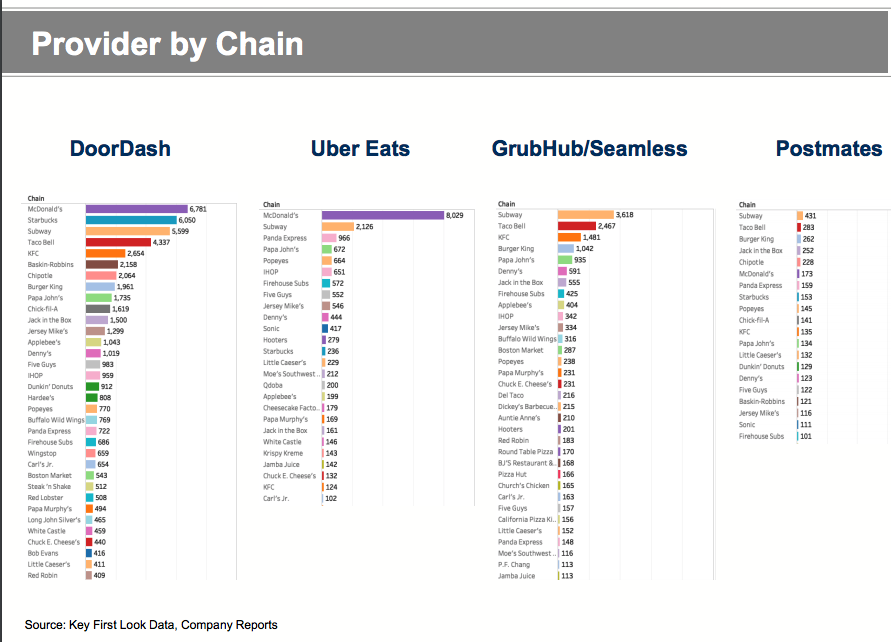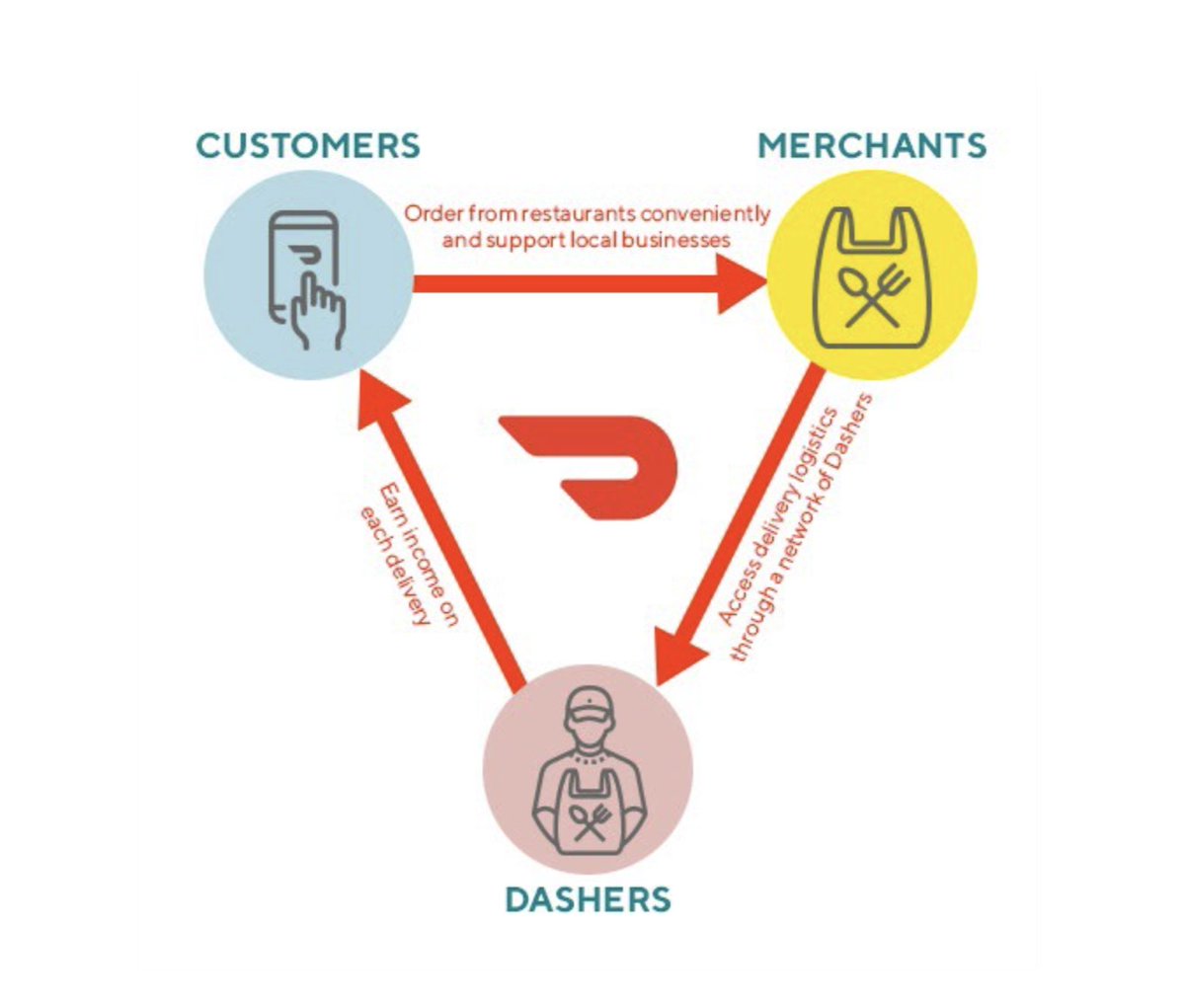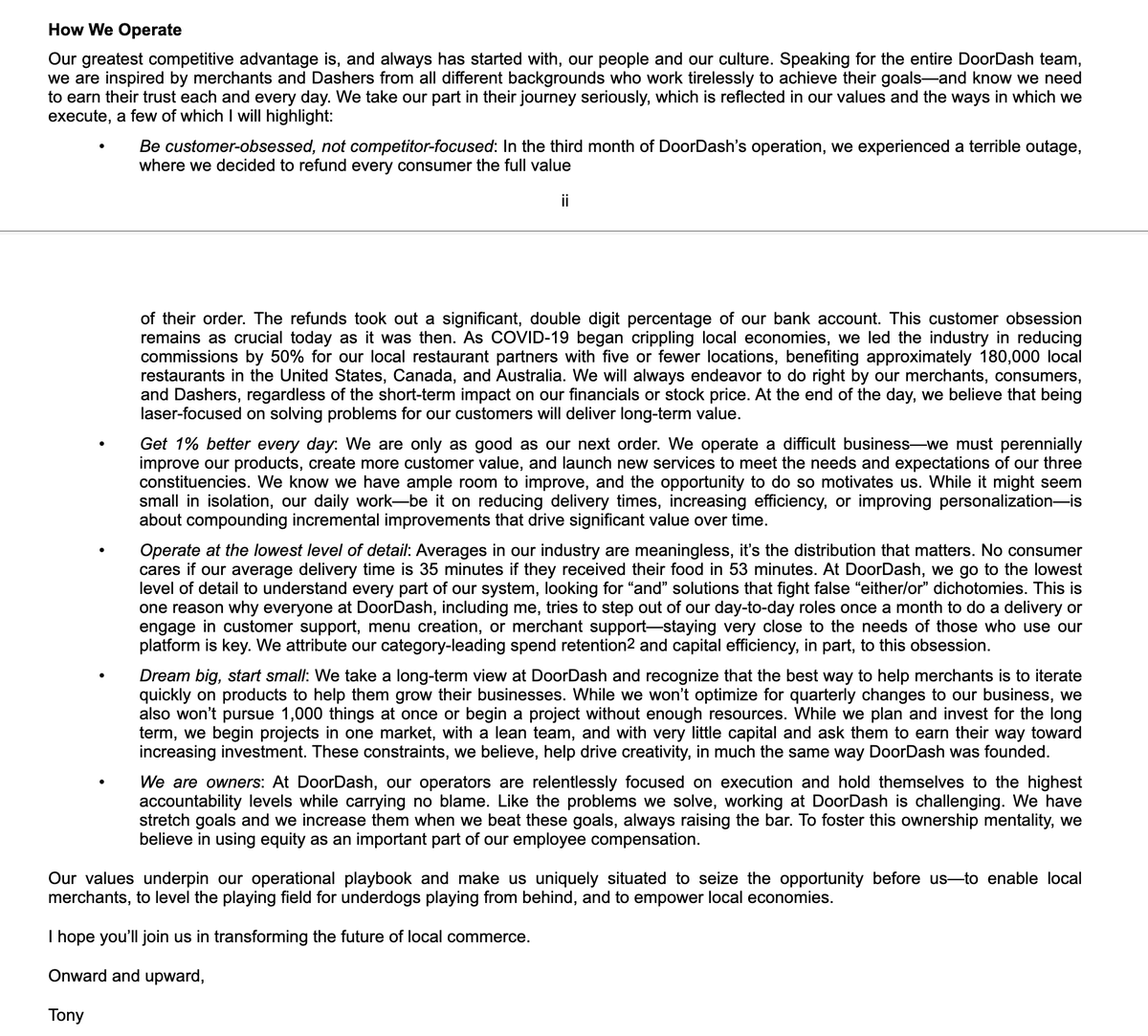Two years ago, DoorDash was a distant third behind Seamless & UberEats in the food delivery race. This week, $DASH will IPO at a $30B+ valuation as America's biggest food delivery provider.
I was one of DoorDash's first 50 employees. Here's an inside look at how we did it


I was one of DoorDash's first 50 employees. Here's an inside look at how we did it



1. Focus on the suburbs
Delivering in cities is hard. Customers expect to pay less, drivers expect to be paid more, traffic sucks, parking is hard. Suburbs have better fundamentals and even more people. While our competitors struggled in cities, DoorDash thrived outside of them
Delivering in cities is hard. Customers expect to pay less, drivers expect to be paid more, traffic sucks, parking is hard. Suburbs have better fundamentals and even more people. While our competitors struggled in cities, DoorDash thrived outside of them
I took over the NYC region three years after we first launched Manhattan & Brooklyn. The market was stagnant & unprofitable. Seamless had a 17 year head start and $0 delivery fees. Uber had 50x our marketing budget. We knew it wouldn't be a fair fight, so we tactically retreated.
Our team shifted focus to the suburbs and launched DD in Long Island, New Jersey, Westchester, and Connecticut. We found instant product market fit. Business skyrocketed and we were profitable in months. Over time, we reinvested those gains into the city and fought on our terms.
2. Selection & quality > price & speed
In food delivery, you can compete on four things – price, speed, selection, and quality.
$DASH couldn't beat Seamless & Uber on price. We knew that was a no go for us.
Uber focused on speed. That was the wrong decision.
In food delivery, you can compete on four things – price, speed, selection, and quality.
$DASH couldn't beat Seamless & Uber on price. We knew that was a no go for us.
Uber focused on speed. That was the wrong decision.
Our analysis showed there was limited marginal benefit to customer conversion or retention rates under 42 minute ETAs. As long as deliveries were sub 42min, customers didn't really care how long they took. Uber focused on achieving sub 30min delivery times to their own detriment.
$DASH focused on having the best selection (all the restaurants you want to order from) and the best quality (we made sure your food arrived on time, with everything, in the state you expected). That focus paid off. People trusted us more, talked about us more, and stuck with us.
3. Obsess over the merchant AND dasher AND customer
$DASH is a service business. It's run by and powered by people. Our competitors focused on customers first; restaurants and drivers second. They often ignored merchant & driver needs. We weighed all sides equally.
$DASH is a service business. It's run by and powered by people. Our competitors focused on customers first; restaurants and drivers second. They often ignored merchant & driver needs. We weighed all sides equally.
By treating merchants & dashers the right way, they became allies, not adversaries. Restaurants in particular felt they could trust DoorDash more vs. the competition. From the host at the front desk, to the store GM, to the business owner, they all chose to send business our way.
4. The team is everything
$DASH's greatest advantage is its team and culture. As someone that helped scale the team from 50 --> 2,500, I can attest that the team lives & breathes these values. They're committed to excellence and success.
$DASH's greatest advantage is its team and culture. As someone that helped scale the team from 50 --> 2,500, I can attest that the team lives & breathes these values. They're committed to excellence and success.
Tony said it best in the S-1:
- Be customer-obsessed, not competitor-focused
- Get 1% better every day
- Operate at the lowest level of detail
- Dream big, start small
- We are owners
- Be customer-obsessed, not competitor-focused
- Get 1% better every day
- Operate at the lowest level of detail
- Dream big, start small
- We are owners
Overall, running a 3 sided marketplace is really, REALLY hard. There is no resting on your laurels. It requires 24/7 focus and world-class execution across every part of the business.
Congrats to the entire $DASH team on this incredible milestone. Onwards & upwards
Congrats to the entire $DASH team on this incredible milestone. Onwards & upwards

For more on $DASH, check out our S1 club analysis https://thegeneralist.substack.com/p/doordash-the-value-of-speed
@mariodgabriele @ranjanxroy @cristinagberta @averyklemmer @thenewb @daveambrose @nanduanilal @d_mccar
@mariodgabriele @ranjanxroy @cristinagberta @averyklemmer @thenewb @daveambrose @nanduanilal @d_mccar

 Read on Twitter
Read on Twitter